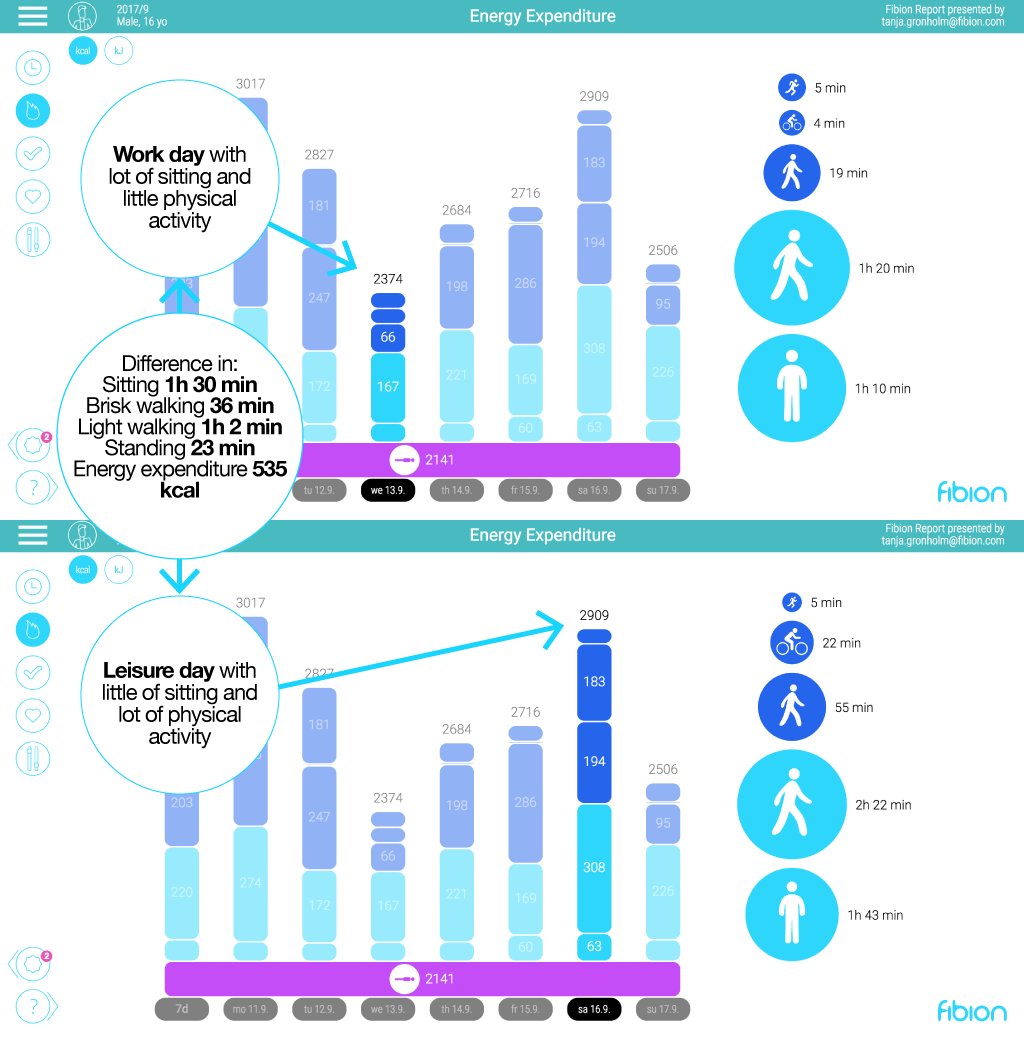
Our work days as caged monkeys: effects of work on energy expenditure
Arto Pesola
Work has traditionally been a significant part of our lives and our personal identity. Professions have been passed on from fathers to sons for generations, while physical labor and handcrafts have been highly valued. At the same time, physical labor has played a significant role in our daily energy expenditure. Think about how men used to work long hours in the woods in the middle of winter with a frame saw and an axe with their flannel shirts crusted with frost from their steaming bodies. Think about how their sons moved swiftly from tree to tree carrying a chainsaw. This chainsaw using logger’s boy then started using a machine that slit wood with the simple tap of a finger. The youngest of three generations of loggers burns roughly 1000 kilocalories less per day than his grandfather did.
Office workers’ daily muscle activity is approximately the same as that of a caged monkey!
What about the factory worker? In the past, assembly lines were buzzing with the activity of people who stood for hours a day moving their hands back and forth to assemble various goods. In the year 2011 the sale of robots increased by 38 % and where people used to stand in the assembly lines you will find robots. Employees now sit while giving the robots commands. Next to the robots by the assembly line approximately 400 kilocalories per day of energy expenditure was left behind.
In the 1960 almost half of jobs required moderate physical activity. Nowadays, only 20 % of jobs require at least moderate physical activity. It is no surprise that four out of five Western people does their work in front of a computer screen. These days, making the grade at work is about being smart rather than having endurance, strength, or specialized building skills.
- Over the past 50 years, the amount of energy needed at work has decreased by 140 kcal in men and 124 kcal in women per day, which is equal to the amount of energy that our population has gained in terms of weight.
- Office workers are estimated to spend 80000 hours at their work place over their entire career.
- Office workers’ muscles are passive for an average of 67 % to 90% of the workday.
- Finland currently sits more than any other European country.
In our previous study we found that office workers’ muscles are passive for almost 90% of a work day. In another study, caged monkeys were found to be also passive for 90% of time. In other words, office workers’ daily muscle activity is approximately the same as that of a caged monkey!
| Daily activity | Energy expenditure (kcal/day) |
| Unmoving while sitting or lying in bed | 300 |
| Sitting work, with no options for physical activity | 700 |
| Sitting work, with some physical activity | 1000 |
| Standing work, for example housewife or salesperson | 1400 |
| Physically demanding work or very active free time activity | 2300 |





